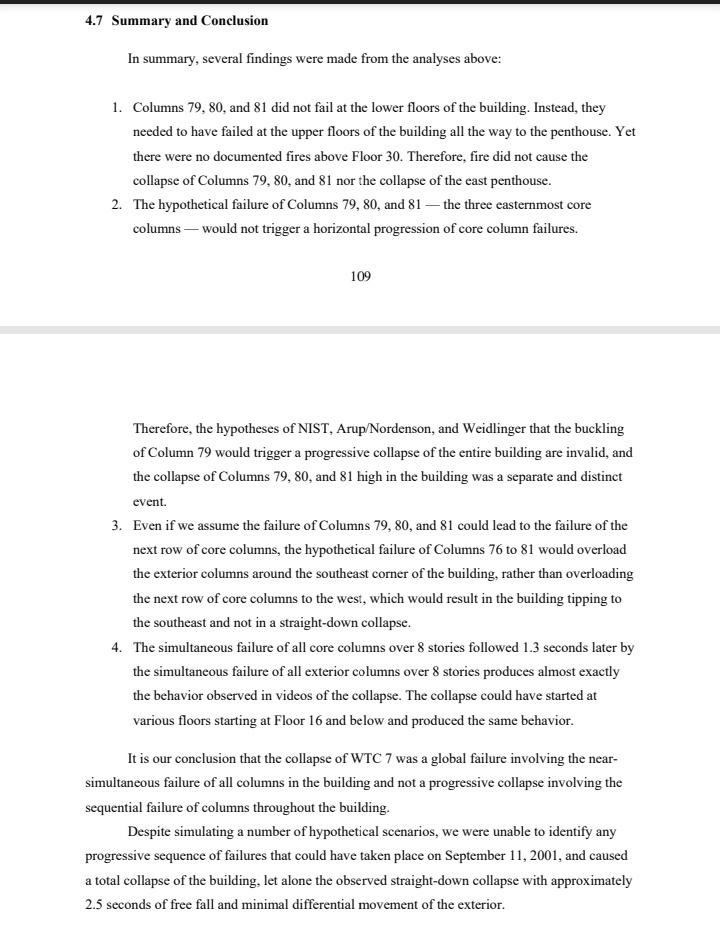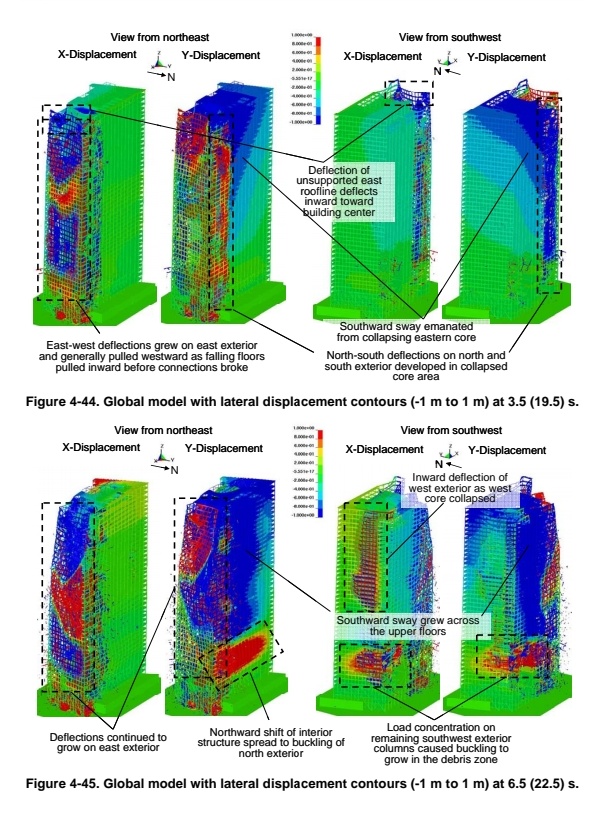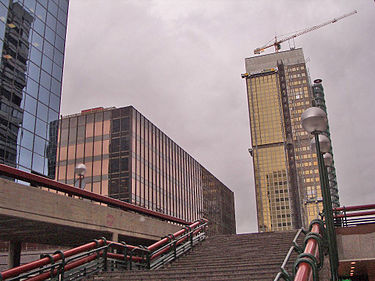No.
I'm making this a separate answer due to the different content compared to the other one, so it can be critiqued separately.
Though not directly referenced in the question, this study is one of the strongest arguments used to claim that Building 7 was brought down by controlled demolition. Therefore, examination of this study is relevant to the question. The study concludes:
The principal conclusion of our study is that fire did not cause the collapse of WTC 7 on 9/11, contrary to the conclusions of NIST and private engineering firms that studied the collapse. The secondary conclusion of our study is that the collapse of WTC 7 was a global failure involving the near-simultaneous failure of every column in the building.
But the study has fatal flaws. Some of the greater examples are touched upon below.
Their result does not resemble reality

They sell their results to the layman as being "just like the real thing".

But is that really so? I want to write a refutation that a layman can understand.
Here is their global simulation compared to the real thing.


They cannot replicate north wall deformation
At first, it looks quite similar. But there is an important difference. Look closely. The real building folds, and the northeast corner moves several meters north. The UAF one doesn't.
So what?
This folding is important, because it destroys their conclusion 1. Such intact floor slabs would not have permitted the kink we observe.
Why is this error important?
Because it invalidates their claims that 1. All columns failed near simultaneously (columns* 79 and 80 + unknown number of unbraced exterior columns failed long ago) and 2. The building fell straight down (the northeast corner swung North several meters).
It seems interesting, therefore, that they do not even mention the o bin n their collapse observations, shown above.
*UAF is mistaken; Column 81 did not support the east penthouse.
They cannot explain absence of dust ejections at top floors
Here is another view of their global results

The east penthouse falls through some 5 floors before crashing to a halt. Had this happened, there would have been dust ejections from the north face as drywall was crushed and windows blown out. No such thing was observed.
Something similar may perhaps be said about the collapse of the west penthouse.
They make strawman arguments
No one said core column failure at the bottom won't lead to column failure at the top
In Chapter 4.3 we read:


In reality, the claim was:

They completely ignored the floor system failures.
No one claimed that redistributed loads alone caused progressive core column failure
In Chapter 4.5 we read:

In reality the claim was

To be fair, it does mention load redistribution, which strikes me as asinine, since the floor system failures. However! The loss of lateral support, the impact of debris, and the collapse of the trusses, are not examined at all in the UAF study.
Their analysis methods are flawed
Treating the building like infinitely strong rubber
To see how plausible NIST's progressive collapse model was, UAF ran a simulation with the NIST damage model.
From their figures 4.8 to 4.16, which shows the results of their analysis of the NIST scenario, we learn that they used a linear static analysis. What does this mean?
A linear static analysis is an analysis where a linear relation holds between applied forces and displacements. In practice, this is applicable to structural problems where stresses remain in the linear elastic range of the used material. In a linear static analysis the model’s stiffness matrix is constant, and the solving process is relatively short
Source
That means they neglected plasticity and fracture in a simulation of something being destroyed. The result: Their building was indestructible; they needed to remove columns manually at each step to keep the collapse going, as shown by the captions to their figures.
Ignoring momentum ##¥
From the above, we can see that they used a "linear static analysis". The "static" in there is particularly damning.
Linear static analysis has two main assumptions:....
- The loading is static.
- Magnitude and direction do not change with time.
- All loads are applied slowly and gradually until they reach their full magnitudes. Inertial and damping properties are ignored due to negligibly small accelerations and velocities.
- Time variant loads that induce considerable inertial and/or damping forces may warrant dynamic analysis.
Source
By using this static model, they are ignoring all that momentum, which would play a pivotal role in a building collapse.
Here are some ways that ignoring momentum can invalidate their results
Failing to predict the failure of components under sudden load redistribution. For example, the load increase on adjacent connections and columns when column a column fails could be magnified by up to two times due to the momentum of the structure displacing downward.
Failing to predict component failure under impact loads. Momentum of falling debris can increase the force they apply several times.
The result of these errors can be seen in this video. Watch the east penthouse kink, spring back and come to a stop on the top floors of the building.



 Consider the girder that spanned between Column 79 on the interior of
the building and Column 44 on the exterior. Thermal expansion of this
girder would have loaded the erection bolts in shear, since (1) there
were no shear studs anchoring the girder to the slab (and thereby
restraining elongation), and (2) the columns were prevented from
lateral movement because they were embedded in the floor slabs which
had considerable in-plane stiffness. Additionally, the expansion of
floor beams that framed into this girder, because the framing was
asymmetrical, tended to add additional shear load to the erection
bolts. The combination of these two shear loads could have failed the
bolts in shear. If the erection bolts were to fail, then there would
be no positive attachment preventing the girder from being pushed off
the seat. Source:
Consider the girder that spanned between Column 79 on the interior of
the building and Column 44 on the exterior. Thermal expansion of this
girder would have loaded the erection bolts in shear, since (1) there
were no shear studs anchoring the girder to the slab (and thereby
restraining elongation), and (2) the columns were prevented from
lateral movement because they were embedded in the floor slabs which
had considerable in-plane stiffness. Additionally, the expansion of
floor beams that framed into this girder, because the framing was
asymmetrical, tended to add additional shear load to the erection
bolts. The combination of these two shear loads could have failed the
bolts in shear. If the erection bolts were to fail, then there would
be no positive attachment preventing the girder from being pushed off
the seat. Source: 




























